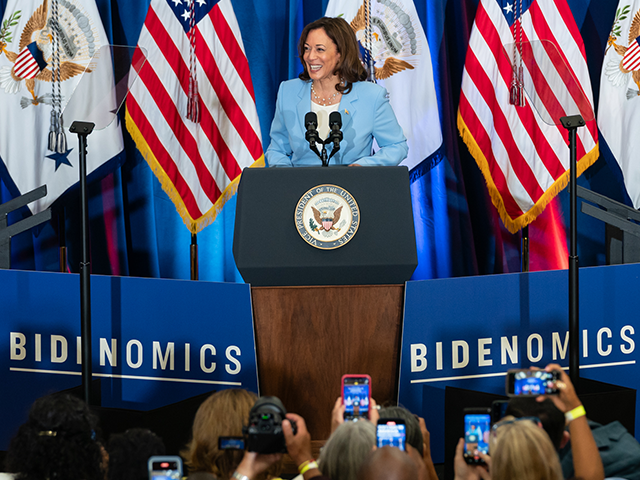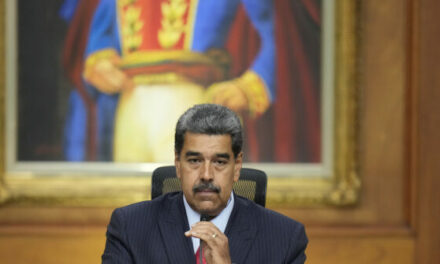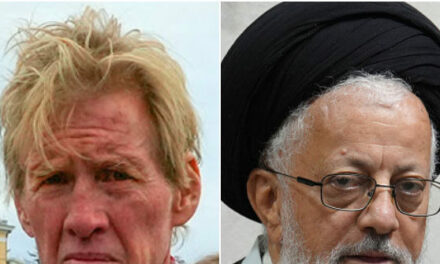We support our Publishers and Content Creators. You can view this story on their website by CLICKING HERE.
How a Trump Win Would Impact Fed Policy
The Federal Reserve’s decision to cut interest rates by a half-percentage point on Wednesday is widely seen as the start of a loosening cycle for monetary policy. A big question is how will this year’s elections impact the pace and extent of Fed cuts.
The consensus on Wall Street is that a mixed result in November, with one party capturing the White House but facing a majority opposition in the House or Senate or both, will not have a big effect. The Fed in that case is seen as pursuing the path it laid out in the Summary of Economic Projections.
What if there’s a Republican sweep in November? The fiscal policies proposed by Trump are unlikely to prove inflationary since they mostly involve a continuation of the tax cuts put in place in his first administration. Those did not lead to higher inflation during Trump’s presidency and are unlikely to lead to higher inflation in a second Trump term. The new cuts at the individual level may provide some additional spending power to the household sector but not enough to raise serious inflation worries.
The corporate tax cuts Trump has mentioned are likely to be stimulative for real growth (by increasing investment and supply) rather than inflationary. Similarly, removing the restrictive stance of the government toward fossil fuels may stimulate hiring and investment, but any inflationary impulse is likely to be more than offset by the supply side effects of lower energy prices and abundant energy.
Tariffs and Immigration Control Are Not Inflationary
Which brings us to the question of tariffs. A recent survey of economists by the Chicago Booth School showed that most economists believe that there is a significant likelihood that some of the cost of tariffs will be passed through to consumers—even though this didn’t happen when Trump implemented tariffs last time around.
But this would be a one time price level increase on imports that would need to be offset by lower prices elsewhere in the economy. The general price level is likely to be unchanged. Which means that there would be no need for monetary policy to be more restrictive in a Trump administration, contrary to the claims of some analysts and pundits that the Fed would keep interest rates higher if Trump wins in November.
What about immigration? Although some economists have voiced concerns that limiting border crossing or deporting illegal aliens would raise labor costs (a surprising claim after so many economists insisted for years that immigrants were not depressing the wages of American workers), there’s very little evidence that this would have an inflationary effect. The decreased availability of low-skilled workers would be more than offset by decreased demand for shelter, food, fuel, and transportation, implying a deflationary weight to more restrictive immigration policies.
Ironically, the logic of the opponents of tariffs and tighter border policies suggests that the Fed should cut rates more if Trump wins. If tariffs and immigration restrictions were drags on growth, the appropriate response would be a more accommodative policy. The Fed would view any one-time price increases as, well, transitory and attempt to offset any drag by loosening policy.
Even if you do not share the view that tariffs and immigration restrictions are a drag on the economy—a view we definitely do not support—it’s likely that the Trump policy mix of tax cuts, regulatory reforms, and economic nationalist trade and border measures would result in noninflationary growth that would allow for lower interest rates than have prevailed under the Biden-Harris administration. They would likely not be as low as the pre-pandemic era, when rates were still recovering from the Fed’s long zero rate policy, but lower than we’ve seen over the past two years.
Kamala Harris’s Climate and Equity Views Are Inflationary
A Democrat sweep, on the other hand, would be inflationary. On the fiscal side, spending would increase, and the tax-increases would likely hit investment and savings rather than consumption. The awkward truth for Democrats is that you cannot offset the inflationary effect of higher spending with taxes on the rich. Even if the higher taxes technically reduce the budget deficit, they don’t reduce aggregate demand because the wealthy were saving rather than spending the money being taxed away.

Vice President Kamala Harris delivers remarks on the one-year anniversary of the Inflation Reduction Act on August 15, 2023, in Seattle. (Official White House Photo by Polly Irungu via Flickr)
What’s more, the higher taxes and increased regulation are likely to reduce incentives to invest and therefore shrink supply from where it otherwise would have been. Centering government policy around climate change and equity is inflationary in the long and short term. War and global conflict—which significantly increased under the Biden-Harris administration—are also likely to continue to provide inflationary impulses into the economy.
A Harris presidency, in other words, would either mean higher inflation or higher interest rates. Possibly both, particularly if the Fed once again initially fails to anticipate the inflationary effects of the Democrat policy agenda and finds itself behind the curve, having to raise interest rates to fend off surging inflation.
The result would be a continuation of the affordability crisis in homes, autos, and large consumer durables that has left the public so deeply unhappy with the Biden-Harris economy.
Fed policy is not formally on the ballot in November, but interest rates over the next four years may turn on the results of the election. A Democrat win would likely mean higher rates and higher inflation, and a win by Trump and the Republicans would point to lower rates and lower inflation.

 Conservative
Conservative  Search
Search Trending
Trending Current News
Current News 







